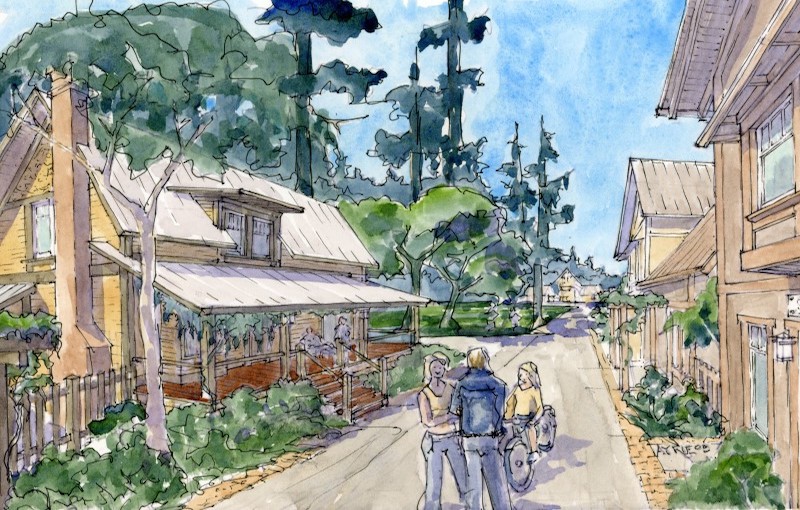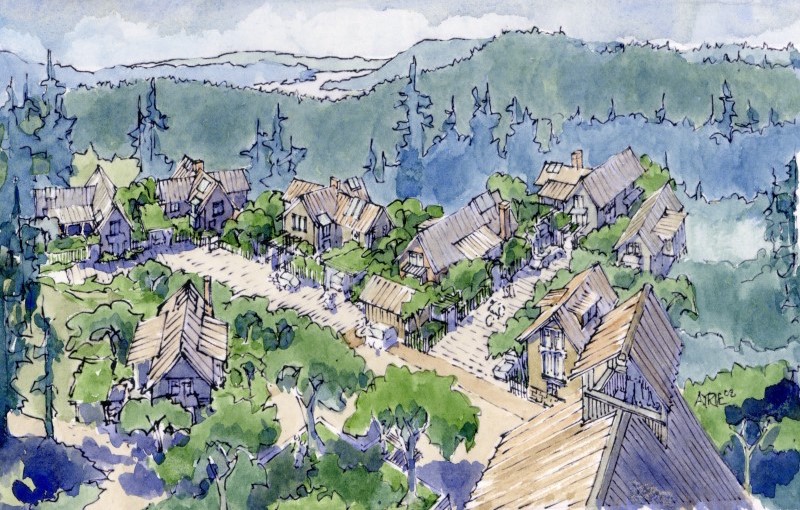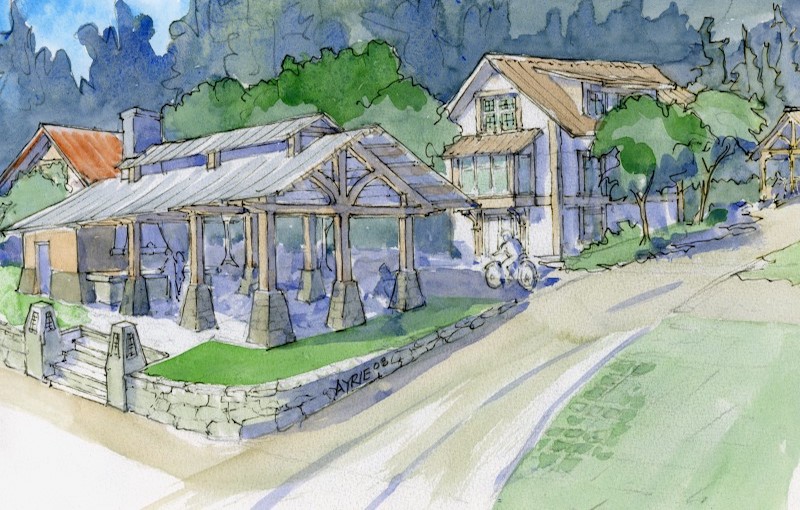Conservation Communities
THE TRUST FOR SUSTAINABLE FORESTRY
What is a Conservation Community?
How does a Conservation Community protect forests?
Conservation communities are a small number of homes, gardens and workplaces clustered on just 5 to 15 percent of the forested land. The sale of these homes makes it financially viable to protect endangered forests. Income is also derived from ongoing sale of lumber, which is logged sustainably. This model does not rely on charitable donations. Such a conservation community, Everwoods, was established by the Trust on Cortes Island in 2006 and demonstrates that the sale of a small percentage of the land provides the necessary financial support to save the remainder of the forest. In an important, time-consuming and expensive component of this process the Trust had a biodiversity study conducted and then established covenants to protect the land in perpetuity.
Praise for Innovative Zoning
“One of the most creative sustainable visions to appear in the last 20 years” is how the Comox/Strathcona Regional District hailed the Trust’s new land-use zoning called the Community Land Stewardship Zone. Based on the formative work by the Tiber Bay community on Cortes Island, it was developed and registered by The Trust and their partner, Eco Initiatives Inc, over several years in establishing the Everwoods Conservation Community. The Trust’s zoning allows for a new model of subdivision: light-on-the-land clustered homesites, (maximum: 1 home per 10 acres); limited roads and infrastructure, with all being subject to sustainable-development guidelines. A revolutionary approach, it has been adopted by the Cowichan Regional District, who now use it as their bottom-line zoning benchmark for development of lands in their region. The Trust is working to have this zoning standard adopted throughout the province.
What are the benefits of communities living in the forest?
When a small number of people build homes in a protected forest, their community becomes the “eyes on the forest.” They care for the long-term health and diversity of the watershed and ecosystem of which they are a part. For the children growing up in a conservation community, stewardship of the forest becomes a way of life that is more likely to be passed on to their children. Their community sustainably uses and benefits from the forest’s resources including: selected tree harvesting (ie ecoforestry), production of locally grown food and gathering of non-timber products such as mushrooms, florals and berries.
Won’t building homes in the forest lead to fragmentation and undermine conservation?
Small conservation communities contain “light on the land” infrastructure including clustered homes and amenities. The small foot print set aside for human habitation minimizes forest fragmentation and disruption, while delivering a quality of life many people yearn for. This model is in direct opposition to suburban sprawl, where everyone owns their acreage privately and fragments the land with roads and large grassed yards.
How is a Conservation Community created?
The first step to creating a conservation community involves the selection of forested land that is under threat of development. An extensive ecological baseline assessment is then undertaken to determine the highest value conservation areas, and a covenant protecting the entire property is secured. The development features of the community are then designed including the clustering of homes, gardens and amenities on 5 to 15 percent of the land, while protecting the remaining land in conservation for ecoforesty or complete preservation where needed, as in areas next to rivers and lakes.
How do Conservation Communities eliminate donor fatigue?
During a time when not-for-profit and environmental NGOs are experiencing “donor fatigue”, this financially sustainable model of conservation leverages revenues from:
1) the sale of a small number of new homesites, and
2) from the ownership and selective harvesting of timber.
These sources of revenue eliminate the need for charitable donations to conserve land.



